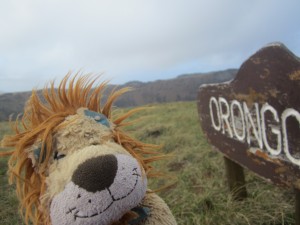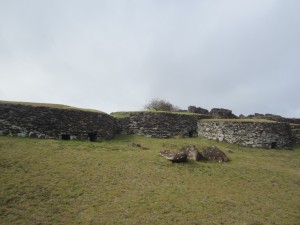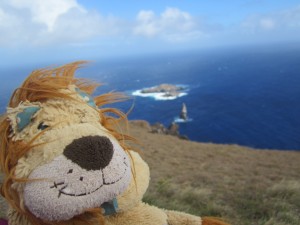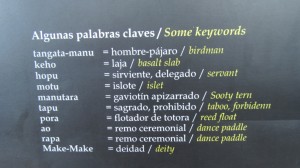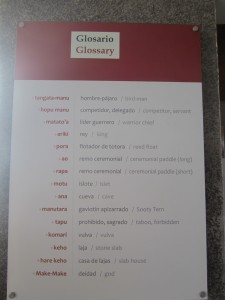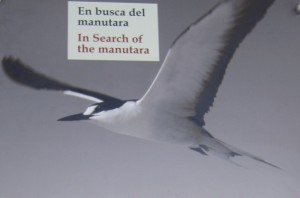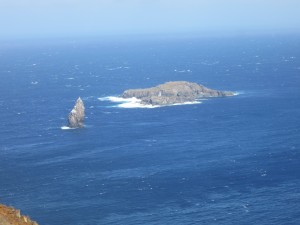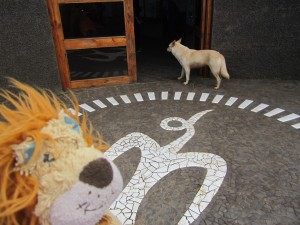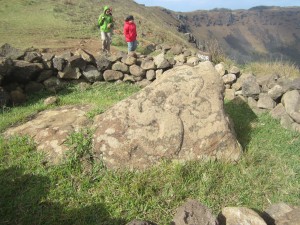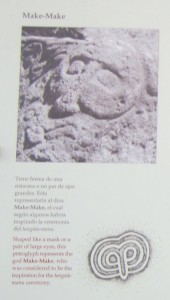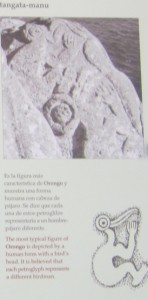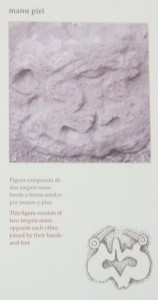At the top of the extinct volcano, Rano Kau, Lewis the Lion discovered an abandoned village built into the headland called Orongo. Tiny houses with very small doorways stood looking out to sea.
Lewis the Lion wondered why they had been built here at all in such an exposed area where they would take the pummelling of the wind and rain? It was lucky therefore that there was a visitor centre there where he could learn all about it, along with learning about the strange tradition of the Birdman.
Orongo was a former ceremonial centre, where a most unusual tradition was performed there.
It was linked to the small, rugged islet, Motu Nui, that Lewis had passed on his way up the hillside and involved a competition between the local people which they believed demonstrated worship to Make-Make (the creator god).
Here is a list of key words that Lewis the Lion learnt were important to the Birdman cult.
Every September (springtime in Easter Island), the Sooty Turn (manutara in Rapa Nui) bird migrated there to nest in their hundreds.
Their loud and distinctive cries would carry to the mainland, signalling the start of the competition. It was time to steal one of their eggs!
The idea was that the competitors would go down from the cliffs of Orongo and swim to the islet, waiting in its caves for the Sooty Turn to arrive. The winner was the first person (or the person they were representing) who could steal the egg and swim back with it to the mainland. They then became the tangata-manu or birdman.
They believed that this person was sacred and their prize was that they got to live as a recluse in the ceremonial village for one year. ‘Some trophy!’ Lewis the Lion thought to himself. He couldn’t think of anything worse. A little bit of time by himself, OK, but a whole year? He was far too much of a social lion to imagine that. It definitely seemed more like a punishment to him!
He discovered that the village that had developed around the ceremonial centre was also considered as sacred, even from ancient times as it overlooked the islet of Motu Nui, where the Sooty Turn bred. It was the most important religious centre in the whole of Easter Island and the chiefs, priests and other important people lived in the houses on the cliff tops. As this was such an important place, there were the most beautiful, decorative petroglyphs (rock carvings) of anywhere else on the island.
These depicted the sacred ceremony and the image of the tangata-manu came to represent the cult of Orongo right across the island. (The same way the Moai statues represented the idea of ancestor worship, Lewis the Lion discovered).
Here are some pictures of some of these sacred symbols.
Lewis the Lion then wondered if the petroglyph he thought looked like an alien was really a sacred symbol instead?! Whatever it was, he was still impressed by the story of these people who revered this special bird.
What competitions have you been involved in?
What was challenging about it?
What competition would you like to take part in one day?

